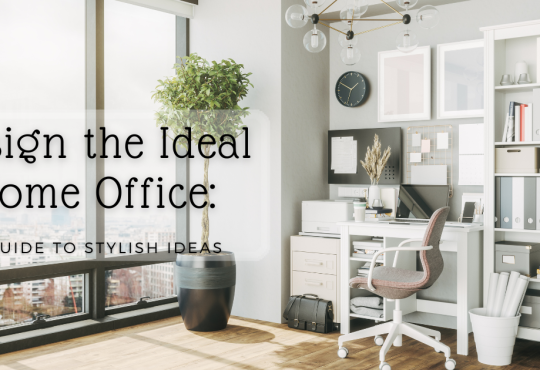Forget flimsy plastic chairs and cookie-cutter patio sets—your outdoor space deserves better. It’s an extension of your home, a sanctuary to relax, entertain, and embrace the beauty of nature. For those looking to create DIY outdoor furniture that combines strength and soul, the pairing of cement and wood is a game-changer. This rugged-meets-refined duo blends industrial durability with organic warmth, resulting in bold, weather-resistant pieces that elevate any outdoor setting.
DIY outdoor furniture opens the door to limitless creativity, from sleek minimalist benches to chunky dining tables and cozy garden seating. With just a bag of cement, a few sturdy wood planks, and a little elbow grease, you can craft designer-quality pieces that are both affordable and impressive, turning your backyard or balcony into a stylish retreat that’s uniquely yours.
The Timeless Strength and Balance of Cement and Wood
Weather Resistance
Cement is naturally resilient against rain, wind, heat, and snow. When paired with pressure-treated or sealed hardwoods like cedar, teak, or redwood, outdoor furniture weathers beautifully and resists rot and corrosion.
Bold Visual Contrast
The superb, smooth finish of cured cement offsets the rich textures and tones of wood, creating a modern-rustic vibe. This duality fits seamlessly into various outdoor décor styles—from boho garden lounges to minimalist rooftop terraces.
Budget-Friendly and Accessible
Most materials are easy to find at local hardware stores, and many molds can be created using simple items like buckets, crates, or leftover plywood. The savings compared to store-bought furniture can be substantial, especially for larger pieces.
Creative DIY Outdoor Furniture
1. Floating Cement and Wood Bench
The floating cement and wood bench is a standout piece that effortlessly blends minimalist design with rugged durability. It features two sturdy cement blocks or L-shaped supports as legs, topped with a thick wooden seat that visually “floats” above the base thanks to hidden connectors or offset placement. This illusion of weightlessness, paired with the raw materials, creates a stunning contrast, perfect for modern gardens, patios, or fire pit lounges.
Design Concept
The bench’s appeal comes from its clean lines and harmonious visual balance. The cement legs anchor the design with their heavy, grounded presence, while the wooden seat adds warmth and approachability. By slightly recessing the cement supports or using concealed brackets underneath, the wood appears to hover—a subtle but powerful visual detail.
Materials Needed
- Quick-set concrete or high-strength cement mix
- Mold forms (melamine, plywood, or plastic boxes for shaping legs)
- Wooden slab or planks (cedar, redwood, or pressure-treated lumber recommended)
- Rebar or wire mesh for concrete reinforcement
- Wood screws or metal brackets
- Concrete sealer and wood stain or sealant
- Sandpaper, level, measuring tape, and basic tools
Steps to Build
- Create the Molds: Build two rectangular or L-shaped molds from melamine or plywood—line with a release agent for easy removal.
- Concrete Pouring: Prepare and pour the mixed cement into the molds, embedding rebar or mesh to enhance structural integrity. Let it cure for 24–48 hours.
- Wood Preparation: Cut the wooden seat to the appropriate length, ensuring accurate fit and balanced alignment with the base structure. Sand, stain, and seal to weatherproof it.
- Attach the Seat: Mount the wood to the cement legs using hidden steel brackets, metal rods set into the concrete, or anchoring screws installed from the underside. The goal is to minimize visible hardware.
- Seal and Style: Apply concrete sealant for longevity and style the bench with outdoor cushions or throw blankets for added comfort.
Ideal For
- Garden paths
- Fire pit seating
- Porch or patio lounges
- Minimalist courtyards or rooftop decks
Style Tips
Pair the bench with gravel, stone, or wood chip surroundings for a natural contrast. Plant low shrubs or ornamental grasses nearby to soften the bench’s bold lines. Add lanterns or solar-powered lights along its sides for cozy evening ambiance.
2. Industrial Outdoor Dining Table
A bold blend of strength and sophistication, the industrial outdoor dining table combines a solid concrete tabletop with A-frame wooden legs to create a statement piece built for outdoor living. This design draws inspiration from urban lofts and modern farmhouse styles, offering a sleek surface that withstands the elements while exuding contemporary charm. The mix of raw cement and natural wood captures the essence of industrial design—clean, functional, and effortlessly stylish.
Design Concept
The rectangular concrete slab is the focal point, providing a smooth, substantial surface that feels permanent yet polished. The A-frame wooden legs stabilize the heavy top and lend a visually dynamic silhouette. This combination of materials is ideal for open-air dining spaces, patios, or rooftop terraces.
Materials Needed
- High-strength concrete mix
- Large mold (melamine board or repurposed tabletop mold for the slab)
- Rebar or wire mesh for reinforcement
- Sandpaper or diamond sanding pads
- Water-based concrete sealant
- Solid wood for legs (cedar, fir, or pressure-treated lumber)
- Bolts or heavy-duty screws for attachment
- Wood stain and sealant for weather protection
Steps to Build
- Build the Mold: Use melamine boards to create a frame to the desired dimensions of the tabletop. Ensure it’s level and sealed at the corners.
- Pour the Concrete: Mix the cement and pour it into the mold. Add rebar or mesh for internal strength. Gently agitate the mold to release trapped air bubbles, then allow the concrete to cure undisturbed for at least 48 hours.
- Craft the A-Frame Legs: Cut wood into angled pieces to form two sturdy A-frames. Join with crossbeams for stability.
- Attach the Top: Once cured, carefully remove the slab from the mold. Sand the surface for smoothness. Mount it to the legs using masonry anchors or L-brackets secured underneath.
- Finish and Seal: Apply concrete and wood sealers to protect against moisture, UV damage, and stains.
Ideal For
- Backyard dining areas
- Rustic-modern patios
- Urban garden parties or BBQ zones
Style Tips
Pair with matching benches for a cohesive look or mix in metal dining chairs to amplify the industrial vibe. Accent with string lights, potted succulents, or a linen runner to soften the table’s bold silhouette.
3. Cement Stool or Side Table
Small but big on personality, cement stools or side tables are one of the easiest and most versatile DIY projects using concrete. These multipurpose pieces include extra seating, outdoor end tables, plant stands, or modern sculptural accents. Using everyday household items like plastic buckets or containers as molds, each piece becomes a unique creation with endless customization options.
Design Concept
The design centers on a cylindrical or conical cement base, formed by pouring concrete into a plastic bucket. Once cured, this form can stand alone or be topped with wood, tile, or mosaic for added functionality and flair. Lightweight enough to be portable yet heavy enough to stay grounded in strong winds, these stools are both practical and eye-catching.
Materials Needed
- Quick-set or regular concrete mix
- Plastic buckets, flower pots, or similar containers function well as molds for shaping concrete into compact and uniform forms.
- Release agents such as oil, cooking spray, or commercial mold release spray prevent concrete from sticking to the mold, allowing easy and clean removal after curing.
- Optional: Wooden dowel, carved wood slab, or tile insert
- Sandpaper for smoothing
- Sealants for both wood and concrete
Steps to Build
- Prepare the Mold: Spray the inside of the bucket with a release agent to ensure easy removal.
- Pour and Shape: Mix the concrete and pour it into the mold. For a built-in handle or texture, embed rope or add a textured liner. Insert a wooden dowel in the center if the piece will support a wooden top.
- Cure and Remove: Let the cement cure fully—typically 24–48 hours—then gently tap the mold to release the piece.
- Attach the Top: Glue or bolt a pre-cut wooden circle on top for a hybrid design. A live-edge slab or a hand-carved surface adds extra character.
- Finish: Sand rough edges and seal to protect from moisture and staining.
Ideal For
- Balcony seating
- Garden paths or poolside perches
- Outdoor side tables or plant stands
Style Tips
Paint or stencil the base for a pop of color, or keep it raw for a minimalist touch. Use contrasting wood tones for the seat to make the design stand out. Group several pieces together at different heights for a modern sculptural effect.
4. Cement and Wood Planter Bench Combo
Both functional and decorative, the cement and wood planter bench merges seating with integrated greenery, forming a versatile and space-saving outdoor focal point. On each end of a sturdy wooden bench, square or rectangular cement planters act as anchor points and natural accents, housing anything from fragrant herbs to trailing succulents or bright seasonal blooms.
Design Concept
This hybrid design turns an everyday bench into a mini-garden oasis. The cement planters provide stability and weather resistance, while the wooden seat bridges the two ends with warmth and elegance. Ideal for small patios, balconies, or garden pathways, this piece maximizes space without sacrificing style.
Materials Needed
- Quick-set concrete or standard cement mix
- Molds for planters (wooden boxes, plastic storage bins, or custom forms)
- Rebar or mesh for added strength in large molds
- Wood planks or a live-edge slab provide a sturdy and visually appealing surface for the bench seat, adding warmth and natural texture to the overall design.
- Screws, metal brackets, or dowels for securing the seat
- Sealants for both materials
- Soil and plants for the finishing touch
Steps to Build
- Cast the Planters: Build or repurpose molds for the concrete planters. Include drainage holes or slightly slope the base. For larger molds, reinforcing with rebar enhances structural strength and prevents cracking during and after curing.
- Cure and Release: Let the planters cure fully (24–48 hours), remove them from the molds, and sand down rough edges.
- Prepare the Bench Seat: Find the wood to the desired length. Sand and seal to weatherproof.
- Assemble the Combo: Secure the bench seat to the tops of both planters using hidden brackets or heavy-duty anchors.
- Plant the Greenery: Add soil and insert low-maintenance plants like succulents, ornamental grasses, herbs, or flowering annuals.
Ideal For
- Apartment balconies
- Entryways and garden paths
- Outdoor reading nooks
Style Tips
Choose contrasting textures—rough concrete planters and smooth, stained wood—to enhance visual appeal. Planters finished in soft neutrals or charcoal tones introduce a modern edge, while an unfinished, raw surface lends a more rustic and organic character. Mix fragrant herbs and flowering plants to engage all the senses.
5. Cement Coffee Table with Integrated Wooden Shelf for Outdoor Use
Blending modern form with natural texture, the outdoor cement coffee table with a wooden shelf is stylish and practical. Featuring a solid cement tabletop and a lower wooden storage shelf, this piece offers ample surface space for drinks, snacks, décor, or even a potted centerpiece—perfect for patios, terraces, or lounging areas.
Design Concept
This dual-level table creates visual balance and clever storage. The cement top offers a sleek, contemporary surface that’s easy to clean and weather-resistant, while the wood shelf adds warmth and functionality. The design feels grounded and elevated, supported by geometric or angular wooden legs.
Materials Needed
- High-strength concrete mix
- Mold for tabletop (melamine or repurposed form in desired shape: square, round, or rectangular)
- Wooden boards for the shelf and legs
- Screws or dowels for frame assembly
- Concrete and wood sealants
- Optional: paint, inlays, or decorative aggregates for the tabletop
Steps to Build
- Create the Tabletop Mold: Use melamine or plywood to build a shallow rectangular or square mold. Spray with release agent and pour in the mixed concrete. Add reinforcement mesh if needed.
- Cure and Finish: Allow the concrete to cure completely before removing. Sand smooth and apply sealer.
- Build the Wooden Frame: Assemble the base using thick wooden legs in a geometric pattern (X-shape, angled supports, or tapered designs). Install a lower shelf using slats or a solid plank.
- Mount the Top: Secure the cement tabletop onto the wooden frame using heavy-duty brackets or adhesive rated for masonry-to-wood applications.
- Seal and Protect: Finish all surfaces with outdoor sealers to prevent water absorption and UV damage.
Ideal For
- Backyard lounges or covered patios
- Garden nooks
- Rooftop terraces
Style Tips
Decorate the top with a tray of candles, outdoor-friendly ceramics, or a small planter. Use the lower shelf to store throw blankets, magazines, or garden tools. For added flair, embed pebbles, glass, or tiles in the concrete mix to customize the tabletop.
Tips for Success When Working with Cement and Wood
- Choose the Right Mix: Use quick-setting concrete for small projects or a high-strength mix for load-bearing furniture.
- Use a Release Agent: Coat molds with oil or cooking spray before pouring to ensure easy removal after curing.
- Smooth the Finish: Use sandpaper or a diamond sanding pad for a sleek, finished surface after curing.
- Seal Everything: Apply concrete sealer to prevent moisture absorption and staining. Seal wood to resist cracking and UV damage.
- Plan for Drainage: For planter-based designs, drill drainage holes or leave a slight slope in the mold.
Sustainability Meets Style
This method doesn’t just save money—it supports sustainability. Many projects can incorporate reclaimed wood or leftover concrete mix. By building instead of buying, waste is reduced, and long-lasting pieces are intentionally created. Each handmade bench, stool, or table carries a story and a signature of craftsmanship that mass production can’t match.
Finishing Touches for Effortless Outdoor Charm
Finish pieces with cozy textiles like outdoor cushions or woven throws. Add LED lanterns, string lights, or natural fiber rugs to complete the scene. Potted plants, trays, and ceramic accents add personality without clutter.





